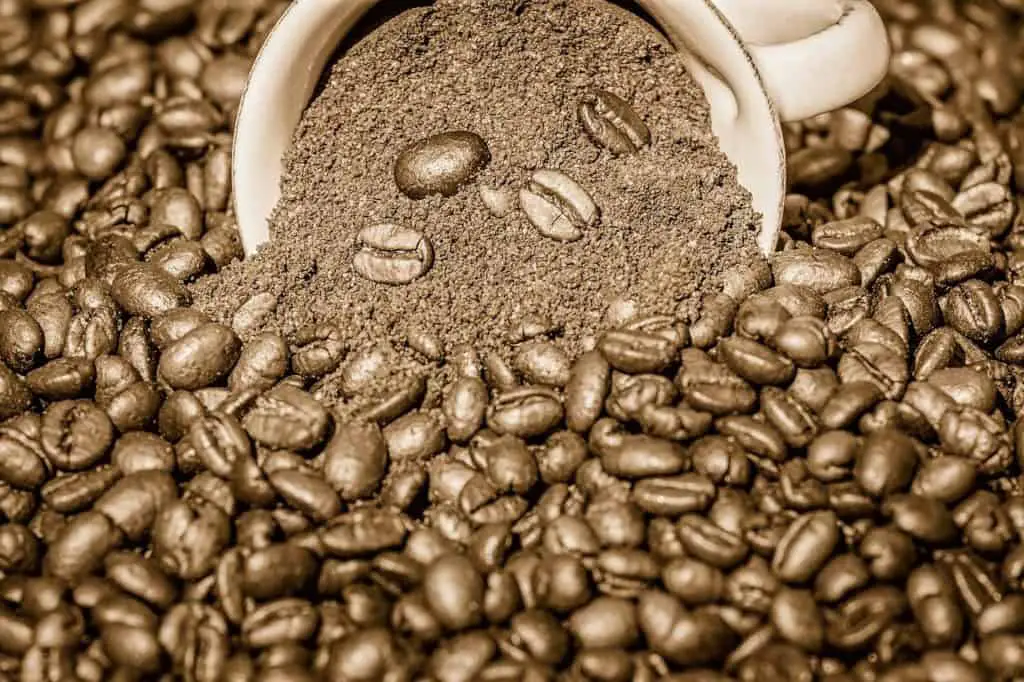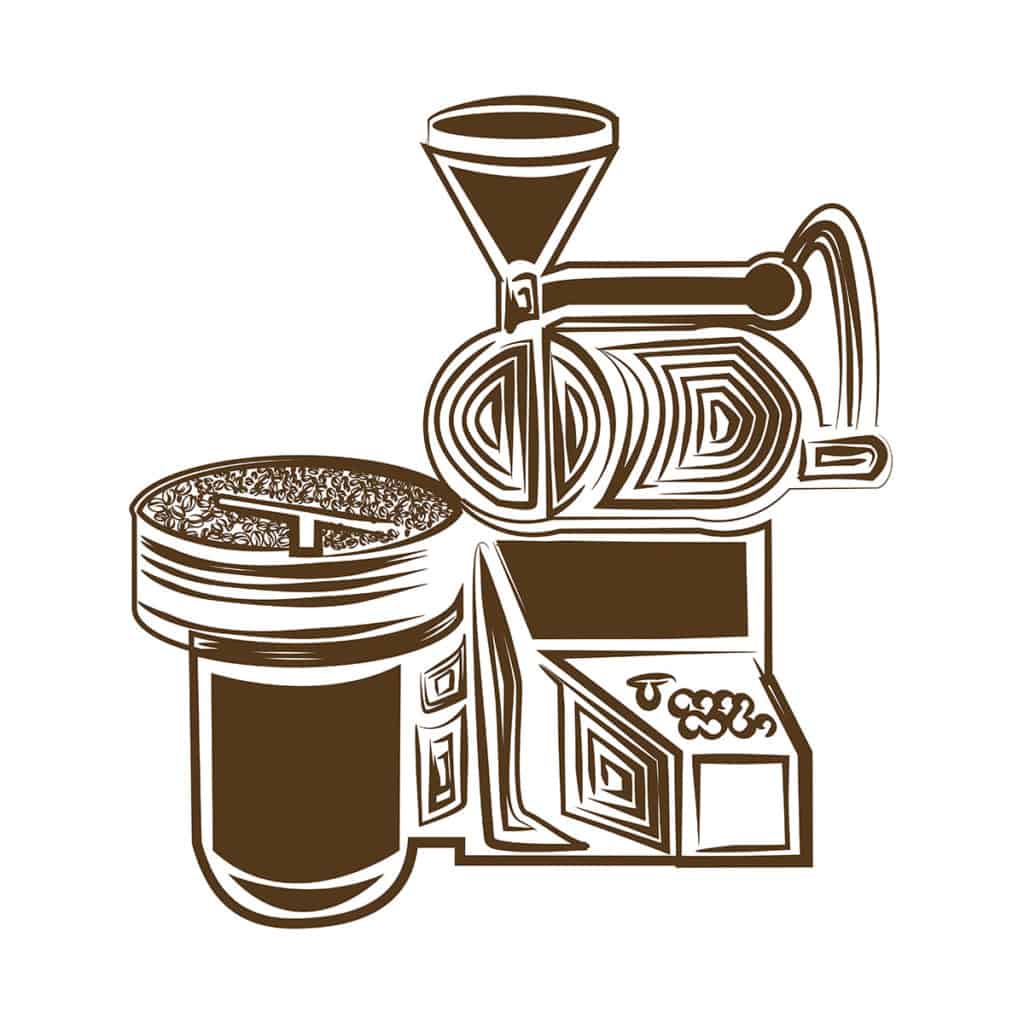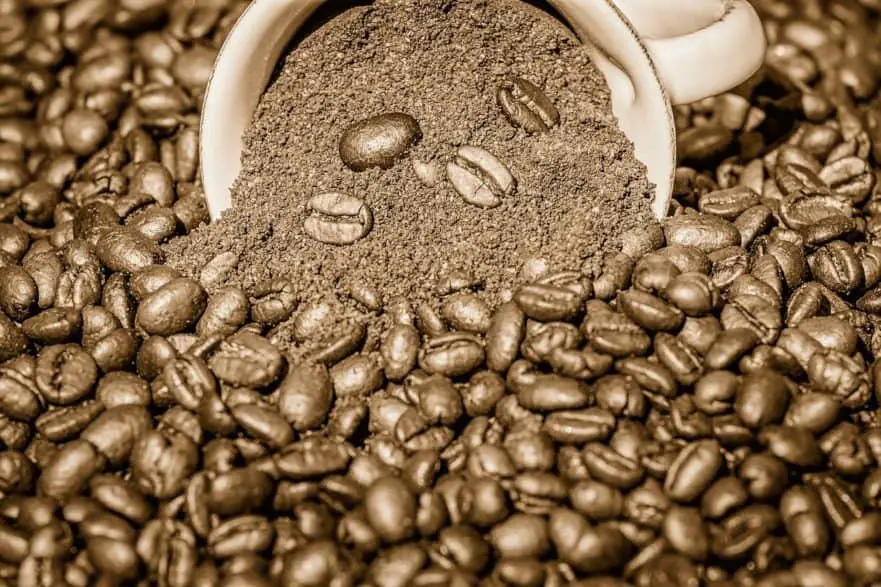
The difference between whole bean and ground coffee is taste, freshness and ease of use. You get much better flavor and fresher coffee with whole bean coffee while ground coffee is easier to use.
Lets start with an example to illustrate my point. You’re walking down the bread aisle at the grocery store and habitually toss a bag of white bread into your cart. When you get home and start putting everything away, you notice that your significant other has brought home a fresh baked loaf from the local artisan bakery.
You smell the warm, yeasty aroma and the urge to carve off a couple of slices and slather them with butter is overwhelming. As you’re feasting, you look over to the counter where the bag of assembly line white sits sadly peering at you through its bright wrapper. You take another bite of your bakery fresh slice, humming with happiness.
If you’ve ever had a similar experience with coffee, you know the comparison with bread is appropriate. We have so many buying choices when we shop, the tendency to stick with the tried and true can deprive us of a more satisfying experience.
If you’re thinking, “coffee is coffee, I’m happy with what I’ve always bought,” maybe a bit of background will give you a new perspective.
What Makes a Good Cup of Coffee?
Many factors combine to create a good cup of coffee. From water quality and temperature, to the appropriate grind and brewing time, nothing has a bigger effect on taste than the freshness of the beans. One of the factors that makes people return again and again to their favorite can of pre-ground coffee is the flavor profile.
Like your favorite fast food burger, you know it isn’t going to be the best you’ve ever had, but it will be consistently okay. The roast masters at the big coffee companies are skilled at keeping the flavors consistent and ‘okay.” They balance that consistency against the knowledge that their product will be stale from the moment you break the seal. It smells just good enough to keep you drinking it.
But when you brew a pot made with fresh roasted coffee beans, it’s like a tailgate party burger hot off the hibachi grill compared to a fast food patty.
Why not to use Pre Ground Coffee
That brings us to a final thought. The reason to stay away from pre-ground coffee also directs that we wait until the last moment before brewing to grind your fresh roasted beans. Once the shell of the bean has been cracked open, the air is there to begin stealing the flavors that you want in your cup.
While your brewing method will control how coarse or fine your grind, waiting until the last moment to grind is always best. That way, you’re not only protecting your investment from loss, you’re guaranteeing a high interest rate.
Why is Fresh Roasted Coffee Important?
There is a hierarchy of love that every roasted coffee bean has been placed in. The beans shown the most love reach the consumer between three days and two weeks after having been roasted. Once the beans are subjected to the high heat of the roasting process, their flavors continue to develop and deepen as the roasting induced changes come to an end.
That takes three days. If you were to grind and brew the beans during that time, they would be as good as or better than pre-ground, but not as good as they’ll be after those three days have passed.
“I never knew coffee could taste this good” is a common refrain from those sipping coffee made from freshly roasted beans for the first time.
At the end of those three days, those fresh beans begin a battle to the death with air. For the first two weeks they’re nearly invincible, but after that they begin a sad slide into ultimate defeat. The air saps them of their flavor and aroma, and from a coffee snob’s perspective are undrinkable.
Why use Local Coffee Roaster to buy Coffee?

The best place to get fresh roasted coffee is from a café supplied by a responsible roastery or where they roast their beans on site. That way, you can talk to the roast master or her employees to explore varietals or blends best suited to your tastes.
One caveat is to make sure that they aren’t selling beans past the freshness date without bagging or storing them somewhere protected from the air.
The Way Coffee is Stored
If your roaster has taken measures to protect their coffee beans from the air, it will keep them on life support for a while. The most common way is to bag them in an impermeable material, preferably one that has a one-way valve if they’re going to sit for an extended length of time. This is a stop-gap measure for instances where you can’t buy and consume the coffee within two weeks after roasting.
Valved bags are great for those coffees you’ll find on your grocer’s shelves. The coffee can be roasted and cooled, then placed immediately into the bag. Some companies even have equipment that blows a puff of nitrogen into the bag the second before it’s sealed.
This displaces the air that otherwise would creep into the beans and stale them. It is completely safe and doesn’t affect the flavor. Don’t fret if your roastery or café uses non-valved bags, however. Their customers largely buy and drink the coffee before it starts to go stale. If stored in a cool, dark place, the staling process is slowed down.
Coffee Profiling Isn’t Wrong
Once you begin to drink fresh roasted coffee, it can be tempting to explore coffees from different growing regions. You’ll find that like gourmet dark chocolate, coffee beans from different parts of the world taste much different.
Kenya AA from Africa is bright and fruity. Ethiopian Yirgacheffe (pronounced like saying “you’re a good chef” really fast) is clean and citrusy. There are plenty of online resources that can point out what coffees from different growing regions taste like in the cup.
Final Thoughts
The easiest way to find out what all the buzz is about is to conduct your own taste test. Take a ride down to a local roastery or café that roasts their own beans, and pick up a fresh bag.
Make a cup of your pre-ground favorite alongside a cup of freshly roasted and ground beans. Cleanse your palate between cups with water or a cracker and prepare to be wowed. You may be the one saying, “I never knew coffee could taste this good!”

